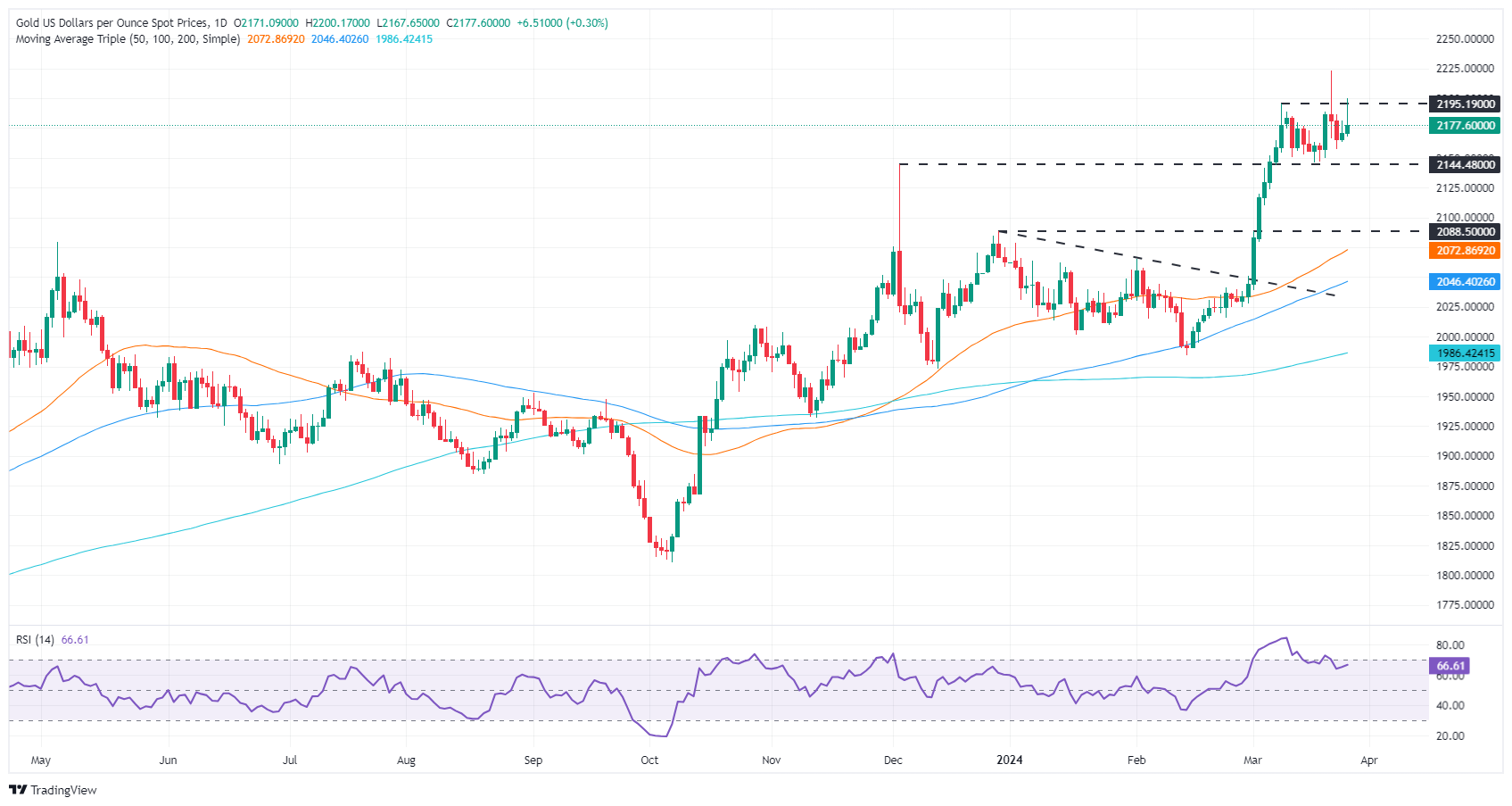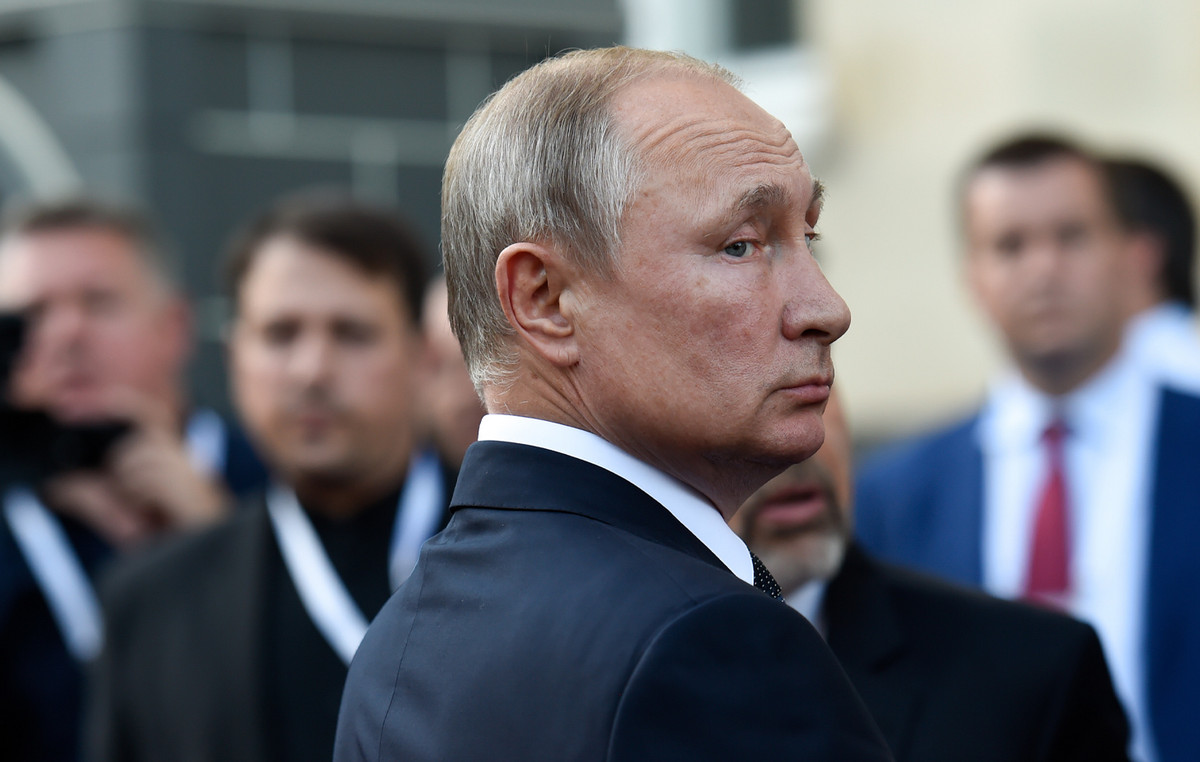- Gold rises amid fluctuations in the US Dollar and lower US Treasury yields.
- The slight rise in the DXY slows down the rise of Gold, but bond rates boost it.
- Mixed data in the US: High orders for durable goods and lower consumer confidence influence sentiment.
Gold price is trading in the green but is off the day's highs of $2,200 reached during the overnight session for North American traders amid a weaker US Dollar. At the opening of Wall Street, the Dollar extended its recovery, while the fall in US Treasury yields kept the yellow metal higher. At the time of writing, the XAU/USD pair is trading at $2.177, up 0.31%.
The US Dollar Index (DXY), which measures the greenback's performance against the other six currencies, is trading flat at 104.30, a headwind for the non-yielding metal. However, the interest rate on 10-year US bonds fell one basis point, to 4.243%, which favored the precious metal.
The US economic agenda showed that durable goods orders hit their highest level since 2022. Meanwhile, the Conference Board suggested that consumer confidence declined further in March, hitting its lowest level in four months.
Daily Market Moves Summary: Gold Advances Amid Strong Durable Goods Orders
- US Durable Goods Orders for February rose 1.4% month-on-month, beating estimates of 1.1% and January's -0.9% decline. Durable goods orders rose 0.4% month-over-month, up from -0.3% and above the consensus of 0.4%.
- The Conference Board (CB) revealed that American confidence remained stable in March, although it fell from 104.8 to 104.7, a downward revision from the previous month. This was blamed on rising prices and escalating borrowing costs.
- Federal Reserve policymakers remain willing to cut rates, but there is division among the Federal Open Market Committee (FOMC) board. Atlanta Fed President Raphael Bostic said he expects one rate cut instead of two in 2024. For her part, Fed Governor Lisa Cook echoed Bostic's comments, adding that easing Policy too soon increases the risk that inflation will take hold.
- Chicago Fed President Austan Goolsbee remains dovish and expects three cuts, although he said he needs more evidence that inflation “is coming down.”
- Money market traders see a 70% chance that the Federal Reserve will cut rates by a quarter percentage point, putting the federal funds rate (FFR) between 5.00% and 5.25%.
- Gold traders are awaiting the release of the Federal Reserve's preferred inflation gauge, the Core Personal Consumption Expenditure (PCE) Price Index. It is estimated that the index will grow 2.8% annually in February, and that monthly figures will slow from 0.4% to 0.3% monthly.
Technical Analysis: The price of Gold remains above $2,170 in a context of strength in the US Dollar

The price of Gold falls towards $2,167, driving a leg higher towards the $2,170 area, around the same time as the Relative Strength Index (RSI) makes a U-turn and points higher. However, buyers must recover $2,200 to maintain the uptrend. This will pave the way to retest the all-time high of $2,223.
On the other hand, if sellers push prices below the December 4 high, which became support at $2,146, that could exacerbate a sell-off and send XAU/USD prices plummeting towards $2,100. The next support would be the December 28 high at $2,088.
Frequently asked questions about Gold
Why invest in Gold?
Gold has played a fundamental role in human history, as it has been widely used as a store of value and medium of exchange. Today, aside from its brilliance and use for jewelry, the precious metal is considered a safe-haven asset, meaning it is considered a good investment in turbulent times. Gold is also considered a hedge against inflation and currency depreciation, since it does not depend on any specific issuer or government.
Who buys more Gold?
Central banks are the largest holders of Gold. In their aim to support their currencies in turbulent times, central banks tend to diversify their reserves and purchase Gold to improve the perception of strength of the economy and currency. High Gold reserves can be a source of confidence for the solvency of a country. Central banks added 1,136 tons of gold worth about $70 billion to their reserves in 2022, according to data from the World Gold Council. This is the largest annual purchase since records exist. Central banks in emerging economies such as China, India and Turkey are rapidly increasing their gold reserves.
What correlation does Gold have with other assets?
Gold has an inverse correlation with the US Dollar and US Treasuries, which are the main reserve and safe haven assets. When the Dollar depreciates, the price of Gold tends to rise, allowing investors and central banks to diversify their assets in turbulent times. Gold is also inversely correlated with risk assets. A rally in the stock market tends to weaken the price of Gold, while sell-offs in riskier markets tend to favor the precious metal.
What does the price of Gold depend on?
The price of Gold can move due to a wide range of factors. Geopolitical instability or fear of a deep recession can cause the price of Gold to rise rapidly due to its status as a safe haven asset. As a non-yielding asset, the price of Gold tends to rise when interest rates fall, while rising money prices tend to weigh down the yellow metal. Still, most of the moves depend on how the US Dollar (USD) performs, as the asset is traded in dollars (XAU/USD). A strong Dollar tends to keep the price of Gold in check, while a weaker Dollar is likely to push up Gold prices.
Source: Fx Street
I am Joshua Winder, a senior-level journalist and editor at World Stock Market. I specialize in covering news related to the stock market and economic trends. With more than 8 years of experience in this field, I have become an expert in financial reporting.







